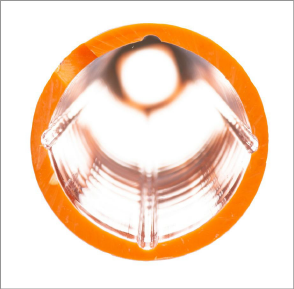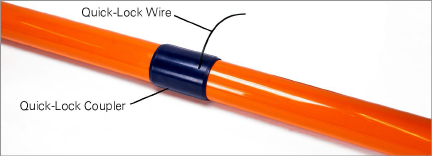The Model 6600 Inclinometer Casing is intended for use with all commercially available inclinometer probes to monitor the stability of embankments, slopes, rock cuts, foundation and excavation walls, piles, etc. The casing sections are designed to be assembled quickly and easily, using self-aligning couplings which incorporate a Quick-Lock connection. It is suitable for installation in boreholes and piles, set into concrete, or attached to structures.
1:

Figure 1: Model 6600-1-10 Quick-Lock ABS Inclinometer Casing
The casing and couplings have grooves spaced at ninety-degree intervals, which fit the wheels of the inclinometer probe thus maintaining the orientation of the probe as it is traversed up and down the casing. The probe accurately measures the change in the angle of tilt, from the vertical, at spacings along the casing. These incremental changes are added together to give a profile of the casing. Changes in the profile become a measure of the stability of the body or structure in which it is installed. The casing can also be used with in-place inclinometers, which are particularly well suited for real-time automatic monitoring.
2:

Figure 2: Ninety Degree Spaced Grooves
3:

Figure 3: Quick-Lock Connection System
Inspect casing lengths to insure that none were damaged in transit. Ensure that the casing is not warped, and that the inside of the casing is clean. Keep the joint and casing interior clean by removing the protective end caps only when you install the casing.
Store casing horizontally and supported evenly so it does not warp or bend. Prolonged exposure to direct sunlight can deform the casing, so store it in shade whenever possible.
Note: Do not assemble the casing prior to insertion in the borehole.
Drill the borehole as vertical as possible, preferably within one degree of vertical. Flush the borehole clear of debris, and verify that the borehole is fully open to the bottom. Check the depth of the borehole before installing the casing. Also, consider that using a casing anchor or external weights will require a deeper borehole.